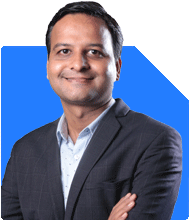I am 40 year old working in PSU bank.My net salary is Rs.50000/- per month.I have 1 girl child aged 5 years.I have no saving and invested only 200000 in PPF and 100000 in MF sip (4000/-per month).
I have 50 lakh life cover and 25 lakh health cover.I have 1 vehicle loan of 14 lakh.How I start investing for better future ?
Ans: You are 40 years old and work in a PSU bank. Your net monthly salary is Rs. 50,000. You have a 5-year-old daughter and need to plan for her future as well as your retirement.
At present, your financial situation includes:
A vehicle loan of Rs. 14 lakh.
Life insurance cover of Rs. 50 lakh.
Health insurance cover of Rs. 25 lakh.
Rs. 2 lakh in PPF.
Rs. 1 lakh in mutual fund SIP with Rs. 4,000 invested monthly.
Although you’ve made some initial investments, you need to expand your portfolio to secure both your and your daughter's future. Let's explore your situation from a 360-degree perspective to provide a detailed, sustainable plan.
Monthly Budget Analysis
You have Rs. 50,000 monthly income, but without savings, the focus should be on managing your expenses and repaying your loan.
Reviewing expenses: List all your fixed and variable expenses. Aim to save at least 20% of your income.
Emergency fund: Build an emergency fund of six months' expenses. You can start with Rs. 5,000 per month until you reach this goal. You can use a liquid mutual fund to park this money.
Addressing the Vehicle Loan
Having a vehicle loan of Rs. 14 lakh is a significant liability. This loan may be affecting your ability to invest more each month.
Prepayment strategy: Assess your loan interest rate. If it’s above 10%, try to pay off this loan faster. Start by allocating Rs. 5,000 to 10,000 extra towards the EMI each month. This will help you reduce the interest burden.
Loan refinancing option: If possible, you can refinance the loan at a lower interest rate to reduce your EMI. But only do this if the new rate provides significant savings.
Investment Strategy for Future Goals
To secure your future and your daughter's, you need to increase your monthly investment and diversify.
Increase SIPs: You are investing Rs. 4,000 per month in mutual funds. This amount is quite low. Ideally, try to allocate at least 20% of your income towards investments. Increase your SIPs gradually, aiming for Rs. 10,000 or more monthly.
Diversifying mutual funds: Instead of investing in a single mutual fund, diversify your portfolio by adding different categories such as large-cap, mid-cap, and small-cap funds. These categories help balance the risk and return over the long term. You can consult a Certified Financial Planner (CFP) to help choose suitable funds.
Focus on regular funds: If you’re investing in direct funds, consider switching to regular funds through a trusted mutual fund distributor or CFP. Regular funds allow for better guidance and ongoing advice from a financial expert. This ensures your portfolio stays on track with your goals.
Public Provident Fund (PPF)
You already have Rs. 2 lakh in your PPF account. The PPF is a good instrument for long-term wealth creation with tax benefits.
Increase PPF contributions: To build a stable retirement corpus, try to invest Rs. 10,000 annually in PPF. However, focus on SIPs more because mutual funds generally give better returns in the long term.
Insurance Review
You already have a life insurance cover of Rs. 50 lakh and a health cover of Rs. 25 lakh. These are good steps, but you can make a few tweaks to improve your protection.
Increase life cover: Since your daughter is still young, it would be wise to increase your life cover. A rule of thumb is to have a cover that’s 10-12 times your annual income. You can look into a term plan that provides high coverage at affordable premiums.
Health insurance: Your health insurance cover of Rs. 25 lakh is sufficient for now. However, as medical costs rise, review it every 3-5 years. You may want to increase the cover in the future.
Child's Education Planning
Your daughter is 5 years old, and planning for her higher education is crucial. Considering education inflation, you should start setting aside a dedicated amount each month for her future needs.
Education SIPs: You can open a separate mutual fund SIP dedicated to your daughter’s education. Start with Rs. 5,000 per month. Equity mutual funds are ideal for long-term goals such as education because they can offer higher returns over time.
Child plans: Avoid child insurance plans that combine investment and insurance. These plans often offer low returns and high costs. Instead, focus on mutual funds and create an education corpus separately.
Retirement Planning
You’re 40 years old and likely have around 20 years before retirement. It’s essential to create a retirement plan that ensures you can maintain your current lifestyle post-retirement.
Increasing SIPs for retirement: Apart from your daughter’s education, focus on building a retirement corpus. Increase your monthly SIPs to Rs. 10,000 specifically for retirement. You can invest in a combination of large-cap and flexi-cap funds, which provide both stability and growth over the long term.
Avoiding annuities: Don’t invest in annuities for retirement. They typically offer low returns and are not flexible.
PPF as retirement corpus: Continue contributing to your PPF account. This will give you a fixed income during retirement, along with the flexibility to withdraw at maturity.
Asset Allocation and Risk Management
Balancing risk and return is crucial when planning for long-term financial goals.
Equity exposure: At 40, you should have a higher allocation to equities for better returns. Over time, you can gradually reduce this equity exposure as you approach retirement.
Debt instruments: Along with equity mutual funds, you can also allocate some portion to debt instruments for stability. Consider investing in balanced hybrid funds, which offer a mix of equity and debt. These funds reduce the risk and help balance your portfolio.
Review annually: Keep reviewing your portfolio every year. Make adjustments based on market conditions and your financial goals.
Estate Planning
It’s never too early to think about estate planning, especially when you have dependents.
Creating a will: Draft a simple will that outlines how your assets should be distributed. This ensures that your family will not face legal complications in the future.
Nomination in investments: Ensure that you’ve updated the nomination details in all your investments, including mutual funds, PPF, and bank accounts.
Financial Discipline and Monitoring
Consistency is key to building wealth over time. Here are a few tips to ensure you stay on track:
Automate investments: Set up automatic transfers for your SIPs and PPF contributions. This helps you remain disciplined and ensures timely investments.
Track your progress: Use a financial app or maintain an excel sheet to track your investments. This will help you understand how your portfolio is growing.
Consult a Certified Financial Planner: Since financial planning can be overwhelming, working with a CFP will give you better direction. They can regularly review your portfolio, suggest improvements, and help you achieve your financial goals.
Finally
You are already on the right path with insurance and initial investments. Now, by increasing your SIPs, managing your loan, and planning for your daughter’s future, you can build a secure financial future.
Be patient and stay committed. Your efforts will yield good results over time, ensuring both you and your family are well taken care of.
Best Regards,
K. Ramalingam, MBA, CFP,
Chief Financial Planner,
www.holisticinvestment.in
Instagram: https://www.instagram.com/holistic_investment_planners/


























